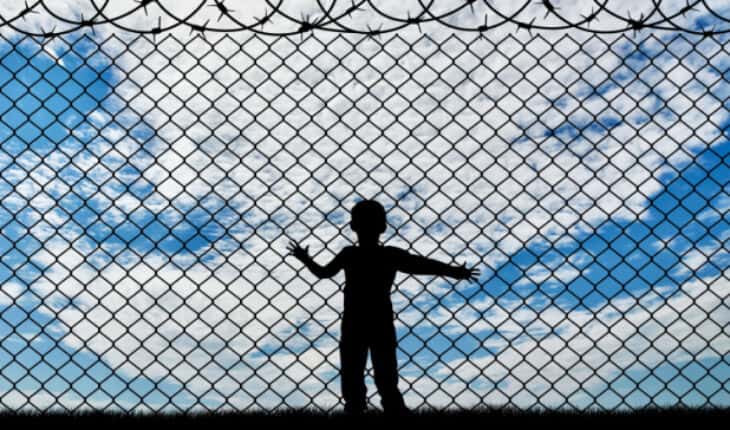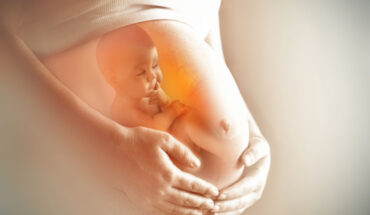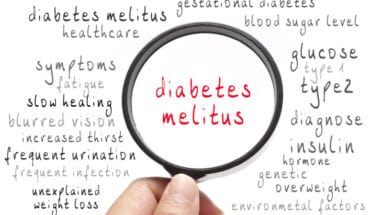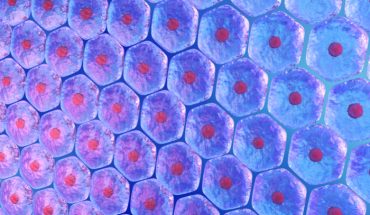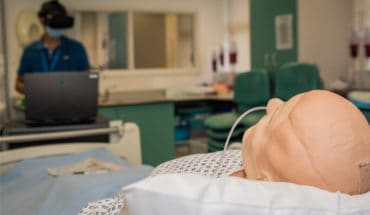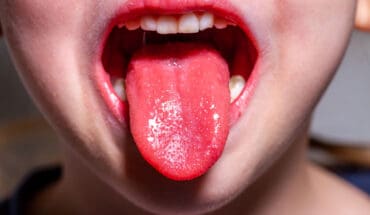World’s first research hub for treating child blast injuries launched by Imperial College London and Save the Children.
Imperial College London and Save the Children have launched the world’s first centre for research dedicated to studying and providing lifesaving innovations to children injured by explosive weapons.
Children are seven times more likely to die from blast injuries than adults. They tend to experience different types of injuries than adults and require specialist care that accounts for their physiology and growth. However, research on the best ways to treat child-specific blast injuries lags far behind research for injured adults.
To address those needs, Imperial and Save the Children have today launched the Centre for Paediatric Blast Injury Studies at Imperial’s White City campus. The Centre brings together medics, engineers, pain specialists, operational humanitarians and prosthetics and rehabilitation experts who are already driving new research and innovations to meet the clinical needs of children with blast injuries.
The team will initially focus on addressing the lack of prosthetics for musculoskeletal and extremity injuries in Ukraine, where four children per day are injured or killed and where mines and unexploded ordnance threaten the lives and limbs of over two million children.
Centre director Professor Anthony Bull, of Imperial’s Department of Bioengineering, said: “As more and more children today live in conflict zones, we need child-specific, translational research that looks at everything from the initial emergency response, to treatments, to prosthetics and development into adulthood. This new Centre will address an unmet need: treating children with blast injuries in a research-led, highly translational way to help them become healthy adults.”
Save the Children UK CEO Gwen Hines said: “For tens of thousands of children in Ukraine, war has become a part of everyday life. Bombs rain from the sky and explosive devices now litter the ground close to where they live and play. Tragically, there has never been a more pressing need for the knowledge and tools to better protect children and care for them when they are hurt by these weapons of war. This new
Centre is the next phase in a ground-breaking collaboration; not just between Save the Children and Imperial but with partners and allies on the ground in conflict zones from Yemen to Colombia, Afghanistan to Ukraine.”
Professor Hugh Brady, President of Imperial College London, said: “At Imperial College London, we are driven by a commitment to making a difference in the world through our research. The harrowing impact of blast injuries on children in conflict zones is a powerful illustration of why this matters.
“Some of the greatest advances in healthcare come from research that spans disciplines. Imperial’s vibrant interdisciplinary research culture, and our world-leading expertise in blast injuries, makes us ideally placed to find solutions to this urgent global crisis. We are proud to partner with Save the Children to ensure our research has an impact where it is needed most.”
Unique unmet needs
Latest data revealed in 2021 that one in six children globally – 449 million children – lived in a conflict zone. That figure will rise dramatically once the Ukraine conflict is considered. These children are at huge risk of injury and death from explosive weapons.
The risks loom even after conflicts finish: children are 50 per cent more likely to suffer blast injuries after fighting ends, as many of their injuries happen when they go outside to play again and pick up unexploded devices.
After a blast, children tend to suffer more internal damage than adults, as their underdeveloped skulls and muscles offer less protection to the brain, lungs, and organs.
Like Imperial’s pioneering adult-focused Centre for Blast Injury Studies, the new Centre will translate research into direct applications that address children’s clinical needs.
Although informed by the work in adults, the Centre will take a new approach driven by the needs of children – a patient group with a more complex set of challenges because of their developing physiology and ongoing growth.
Professor Bull said: “Children’s needs after blast injury are very different from those of adults. Their treatment and rehabilitation must consider their unique physiology and future growth to allow them to both heal and flourish. The new Centre will bring together the best minds in this field to drive better treatment and care for child victims of blast injuries across the globe.”
Researchers at the new Centre are using motion capture technology to analyse the movements of people using prosthetic limbs in detail and see how prosthetics can be improved. They can then quickly 3D print new prototypes and conduct detailed tests to see how the prosthetics perform when faced with the specific forces and strains the prosthetic will endure, so that new designs can be further refined.
The Centre also has facilities that simulate the effects of different types of blast, to study the fundamental science behind blasts’ effects on how bones grow and how soft tissues heal.
Imperial PhD candidate Caitlin Edgar said: “We are already developing low-cost age-appropriate prosthetics for children with limb amputation that consider growth and physiological development in conflict affected areas. We will expand our research to the mechanical effects of blasts on the growth mechanisms in bones, and the effects of pain and stress on trauma and healing.”
Strategic approach
The Centre will address the most important questions that are not being answered elsewhere. It will use the initial funding from Save the Children to support new four-year PhD studentships to understand the biomechanics of blast on the child, emergency medical needs, rehabilitation, and surgical and rehabilitation technology.
As a hub of expertise, researchers from across disciplines will come together and use new knowledge to influence policy and improve the lives of children affected by physical and psychological conflict trauma.
Imperial’s partnership with Save the Children is already addressing challenges faced by medics treating children with blast injuries across the globe, including in resource-limited settings. One such example is the Paediatric Blast Injury Field Manual, which helps medics in conflict zones treat children quickly across the continuum of care. Already translated into six languages, the manual is being used in twelve conflict zones including Ukraine, Syria, Yemen, and Afghanistan.
Speakers at the launch, hosted by Save the Children Ambassador Natasha Kaplinsky, included Professor Bull, Gwen Hines, Director of the University of Bath’s Centre for Pain Research Professor Christopher Eccleston, Dr Andriy Dvorakevych PhD, leading paediatric surgeon at Lviv City Children’s Clinical Hospital in Ukraine and Imperial PhD candidates Caitlin Edgar and Claudia Ghidini.
- Gut microbiome could delay onset of type 1 diabetes - 3rd April 2025
- The da Vinci 5 Robot Is Set To Transform Bariatric Care: - 31st March 2025
- Beyond money: the hidden drivers fuelling child food insecurity - 31st March 2025
